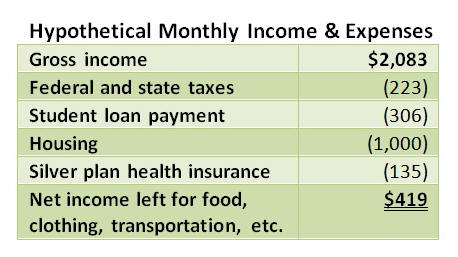Nurse practitioners and physician assistants
When an estimated 25 million to 30 million people gain health coverage through the Affordable Care Act next year, many of them will likely pay a visit to the doctor . . . Demand for physician services is expected to increase at least 2% to 3%, especially for regular checkups and other preventive medicine . . .
. . . physician assistants and nurse practitioners, who can perform many of the same services at a fraction of a doctor’s salary, are filling the ranks. The BLS forecasts PA jobs will grow 30% to more than 108,000 from 2010 to 2020; registered nurses will increase 26% to more than 3 million. . .
Payroll
The law requires employers to offer insurance to employees who work an average of 30 hours a week or more, at a cost for workers of not more than 9.5% of their annual salary. The responsibility of tracking work hours and health spending will fall to payroll departments, or companies that provide paycheck services such as ADP, human resources professionals say. Indeed, ADP’s new business bookings for its employer services, including payroll, grew 9% in the third quarter, CEO Carlos Rodriguez said when the company released earnings in May. . .
Computer programmers
Under the Affordable Care Act, doctors and hospitals must use electronic medical records, but taking their old paper system into the digital age is a giant technological construction project. “You need an army of programmers to put these things together,” says Osborne, of Staffing Industry Analysts. Indeed, the number of medical records and health information technicians employed in the U.S. has grown 7% to more than 182,000 since 2009, before the ACA was enacted, according to BLS data. Employment in other occupations, meanwhile, decreased or stayed flat during the same period, Osborne says. . .
Lawyers
The Affordable Care Act is now required reading at many law schools. If there is one thing about Obamacare that everyone agrees on, it is that the regulations are highly detailed, complex and still in flux — requiring experts to continually break down what they mean and how they should be followed. As a result, many companies are bringing in attorneys: “Everybody’s in sort of a muddle about it, so there is going to be an army of people at least in the short-term trying to figure out what people are supposed to be doing,” Osborne says. . . .
Medical billing coders
With millions of new patients comes millions of bills. And even before those bills come in, the work is piling up for physician and hospital billing offices, which are racing to prepare for the new ways they will have to submit patient claims to insurance companies. . . .
Consultants
Employers, especially those who will offer health insurance for the first time or dramatically overhaul their plans to comply with the law, are struggling to figure out what type of coverage makes the most sense for their workers. Teams of consultants are being brought in to analyze the health risks and needs of their employees and design health benefits to suit them. . . .
Customer service reps
Opening the new exchange marketplaces, where consumers will be able to purchase health insurance, will also require huge customer support staff. Known as “navigators,” these employees will combine a form of customer service with health insurance knowledge. . . .
Occupational therapists
Insurers will no longer be able to deny coverage to people with disabilities in 2014, so more of them will likely have health insurance. Occupational therapists, which help optimize disabled people’s homes and workplaces to meet their mobility needs, were already in high demand: The unemployment rate in the field is just 1%, according to Osborne, at Staffing Industry Analysts. . . .
Human resources
Between administering companies’ health plans, tracking employees’ hours to determine whether they are eligible to enroll, and making sure the employer is in compliance with new regulations, human resources departments have been swamped gearing up for the ACA. . . .
Wellness and fitness coaches
The law puts pressure on employers to reduce their health spending by making workers healthier. That movement is taking the form of new worksite-based wellness programs and classes, such as Weight Watchers and fitness challenges. Often, companies will hire coaches to help strategize with employees and design personalized nutrition and fitness programs, and offer workers incentives to participate. Indeed, health educators, who teach people about healthy habits and develop programs to promote those behaviors, are on the Bureau of Labor Statistics’s list of fastest-growing jobs: The field will grow 37% to nearly 87,000 positions in 2020, according to the BLS. Many of these coaches, who specialize in helping people manage chronic conditions and diseases like diabetes, are employed by wellness companies that sell their services to employers.
College students may want to research these fields as they decide upon their majors. Some of these occupations seem to have more staying power than others, keeping in mind that technology will continue to undercut employment numbers in many areas. I shudder to think of the growth in bureacracy. And I wouldn’t count on Obamacare to put a significant dent in the huge slump in jobs for lawyers.



